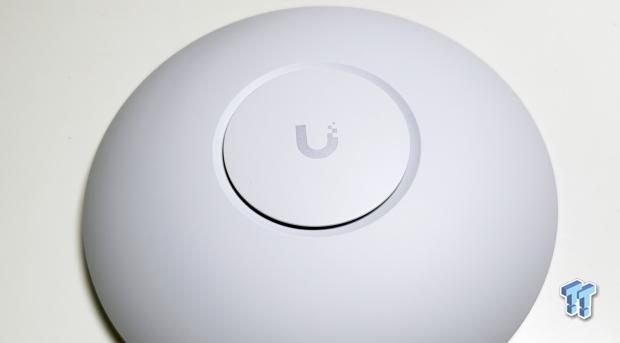
The Bottom Line
Pros
- + 2.5Gbe Uplink
- + PoE+ powered
- + Wi-Fi 7
- + Price
Cons
- - UniFi App is limited
Should you buy it?
AvoidConsiderShortlistBuy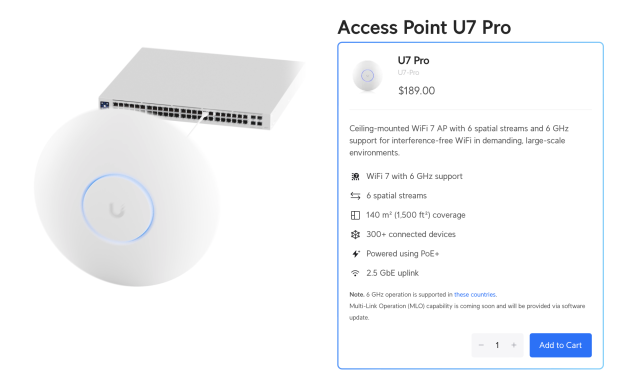
With the ratification of the 802.11BE Wi-Fi 7 standard nearing, we are beginning to see high-end solutions enter the market. Of course, this new technology comes at a price, as we have noted a rather steep jump in price for mesh kits from both Eero and Orbi, reaching upwards of $1700. That said, we have vendors like TP-Link offering entry-level Wi-Fi 7 solutions, hitting the $250 price point.
Those who have built their network with individual gateways, switches, and APs get a bit more flexibility when upgrading, with the ability to swap out the AP only as they move to WiFI 7. With that, we focus on the UniFi AP U7 Pro, Ubiquiti's latest offering, and the cheapest path to 802.11BE I have seen on the market.
The U7 Pro's specifications give us a tri-band 2x2 radio configuration. This allows up to 688MBps with the 2.4GHz radio, 2882Mbps on the 5GHz radio, and a massive 5765Mbps on the 6GHz radio. Uplink on the U7 includes a 2.5Gbe POE+ capable RJ45 connection. This unit also includes wall and ceiling mounts and comes in at $189 straight from Ubiquiti with a two-year warranty.
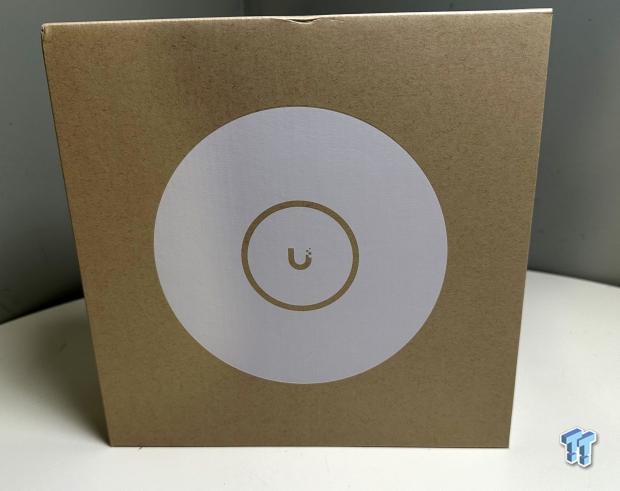
Factory packaging is a brown box offering a silhouette of the AP with UI branding.
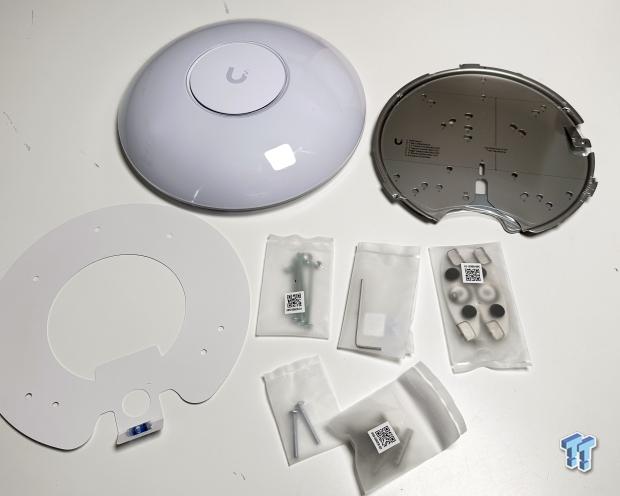
Included with the AP at the top left is mounting hardware for both wall and ceiling setups. A paper template lays below the AP with all necessary screws to install to the right.
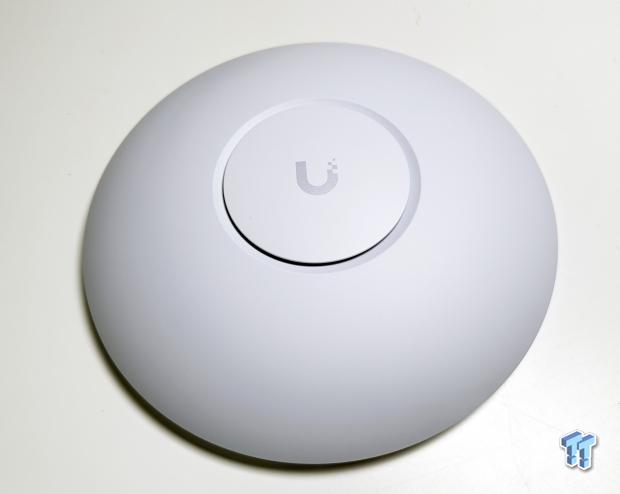
The U7 Pro is a standard-size AP that is a touch over 8" in diameter. The center of the AP offers an LED that shines white and blue depending on its network status.
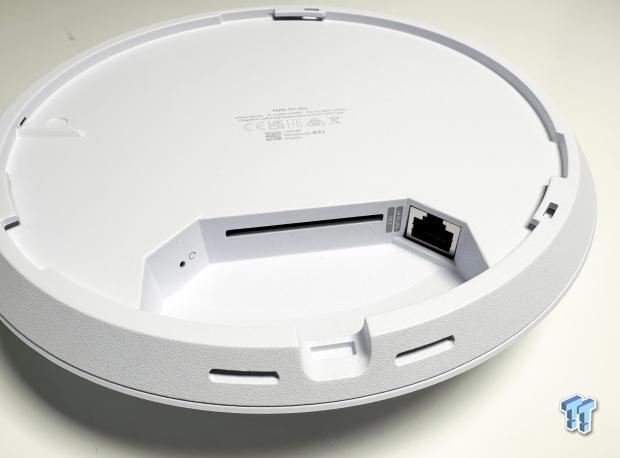
The AP does offer a reset button on the left side, while the right has our 2.5Gbe PoE+ uplink.
Access Point Setup
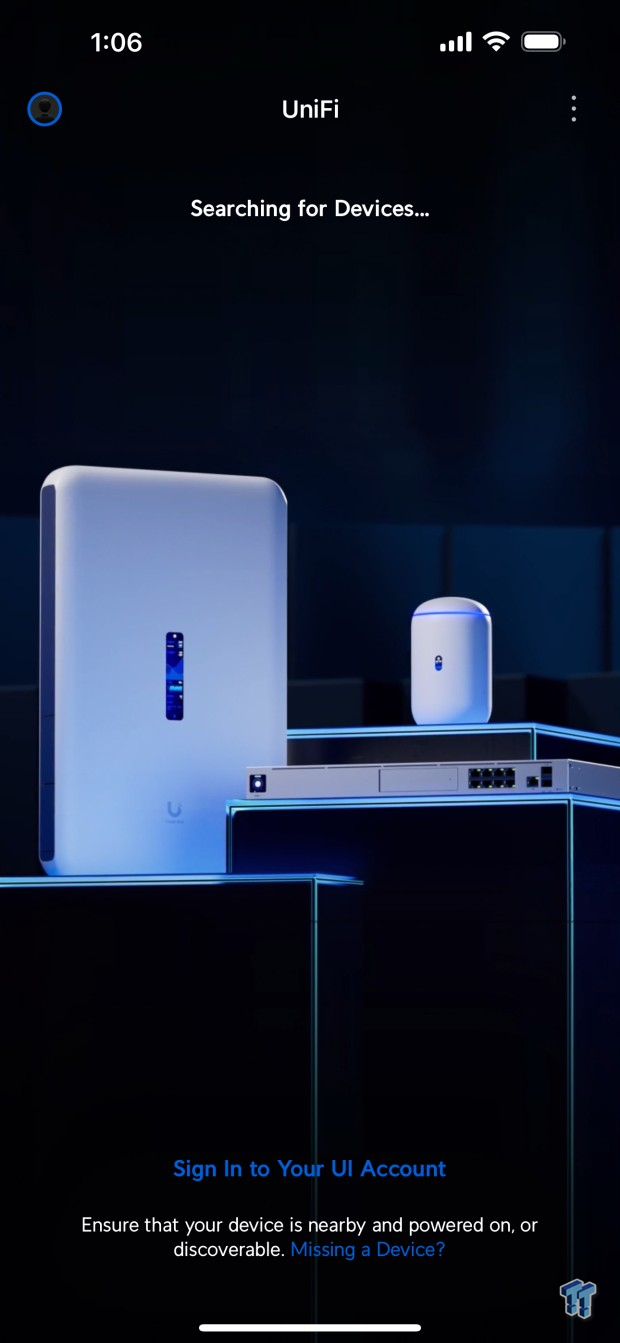
The U7 Pro can be set up through the UniFi Cloud by adopting the AP during setup; alternatively, it can be set up as a stand-alone device, as we chose to do for this review.
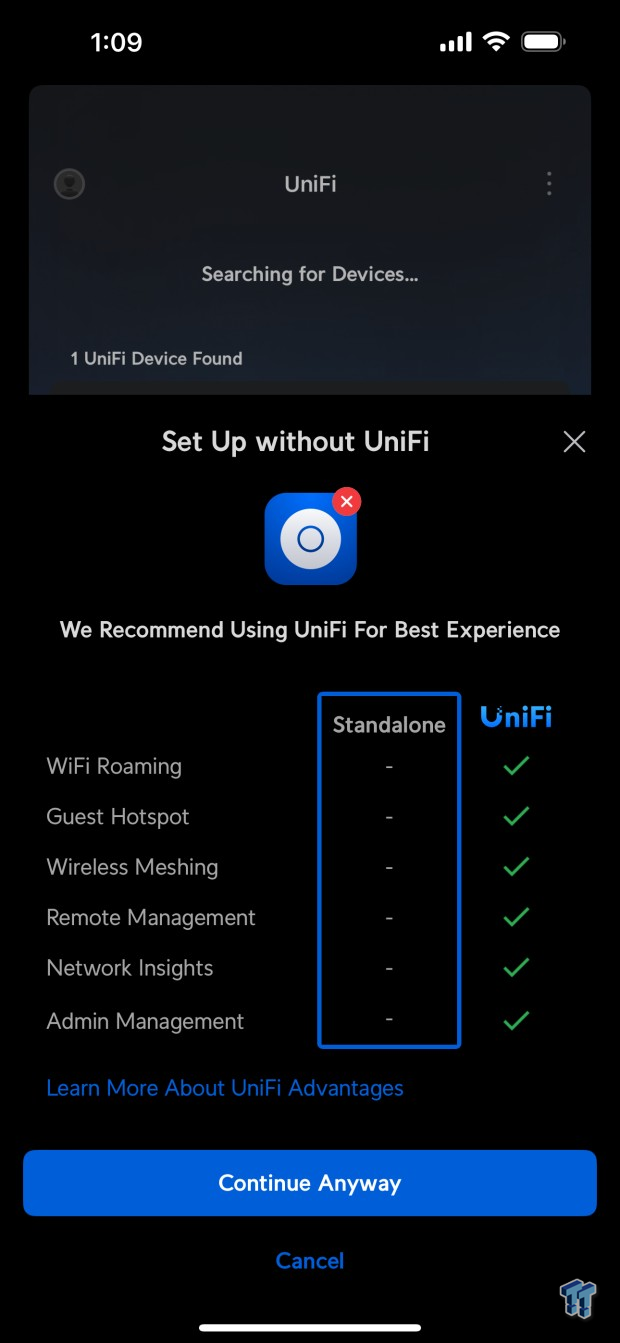
As seen above, you can see the two setup options and their benefits.
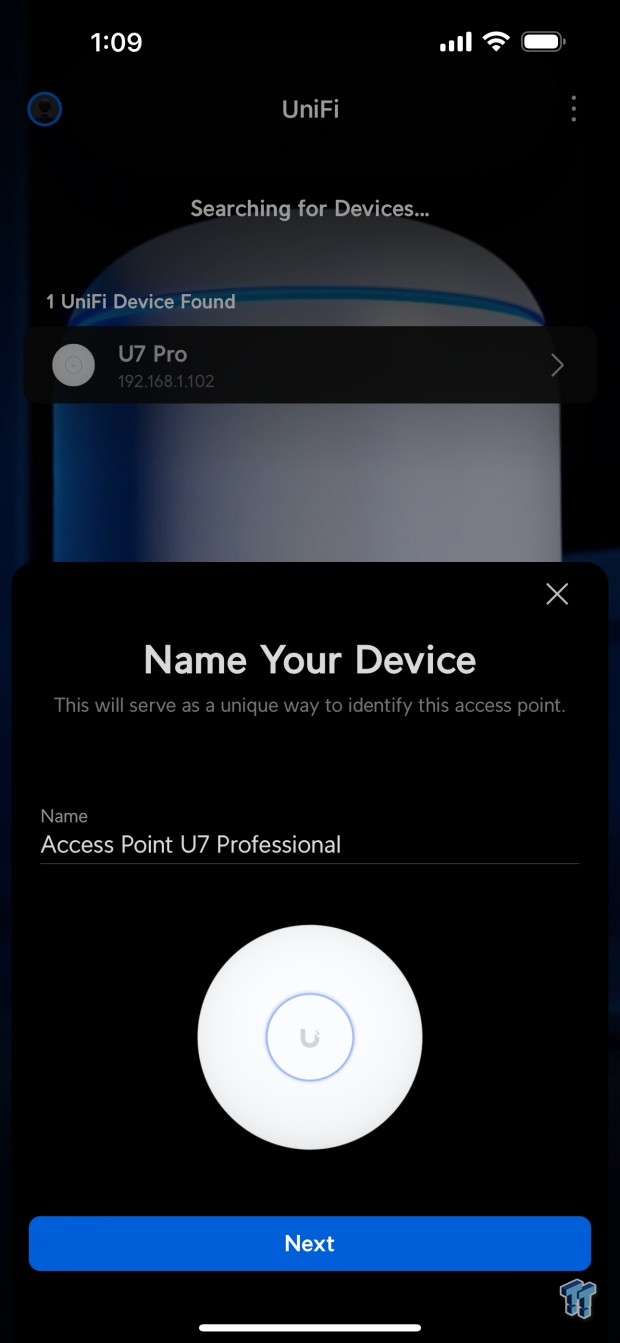
The next step is to name your AP. We kept it basic and used the default naming.
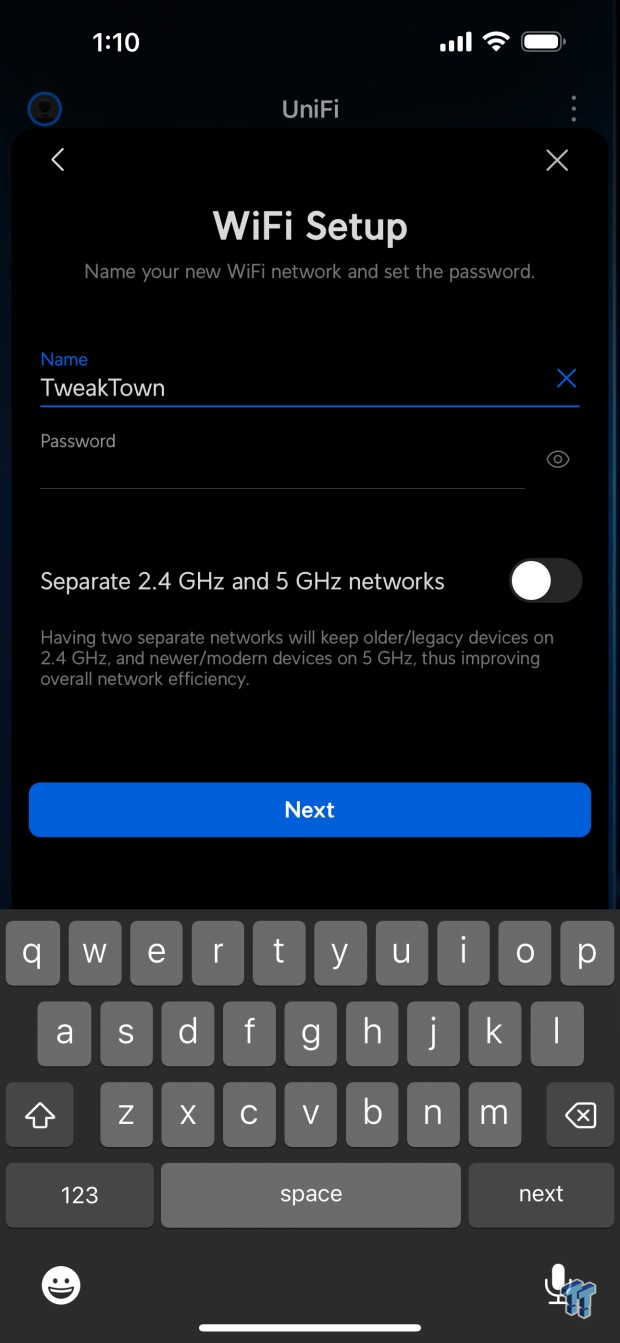
Moving on, we set up our wireless SSIDs. Here, you can separate the networks if you want to manually choose which devices are on each band.
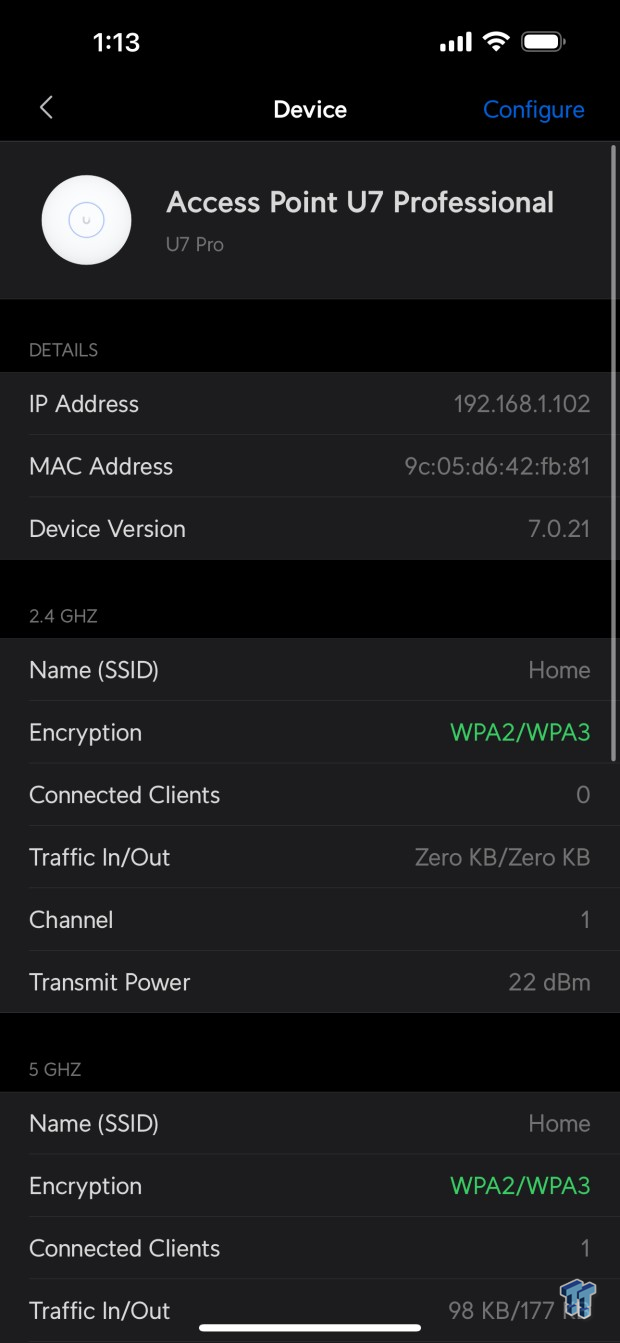
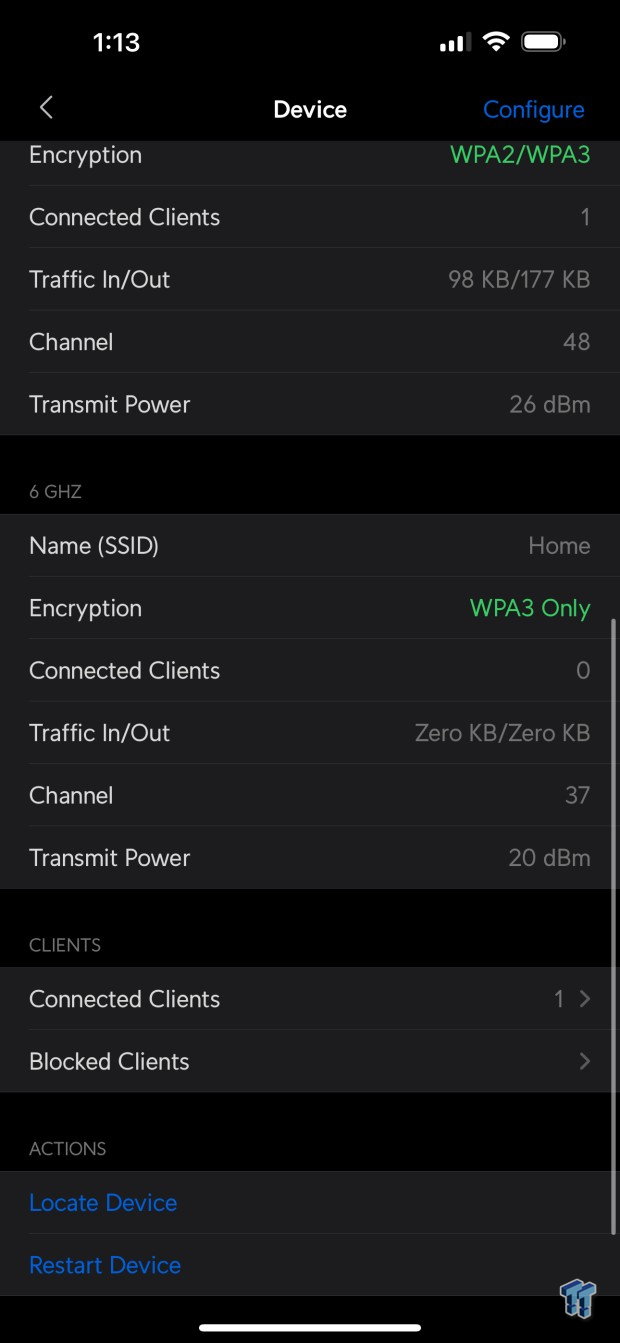
Once the initial setup is complete, we have a few options for configuring the U7 Pro in the app. As seen above, we have the AP's IP address and each of its three bands, along with information on encryption, connected clients, and what channel they are broadcasting on.
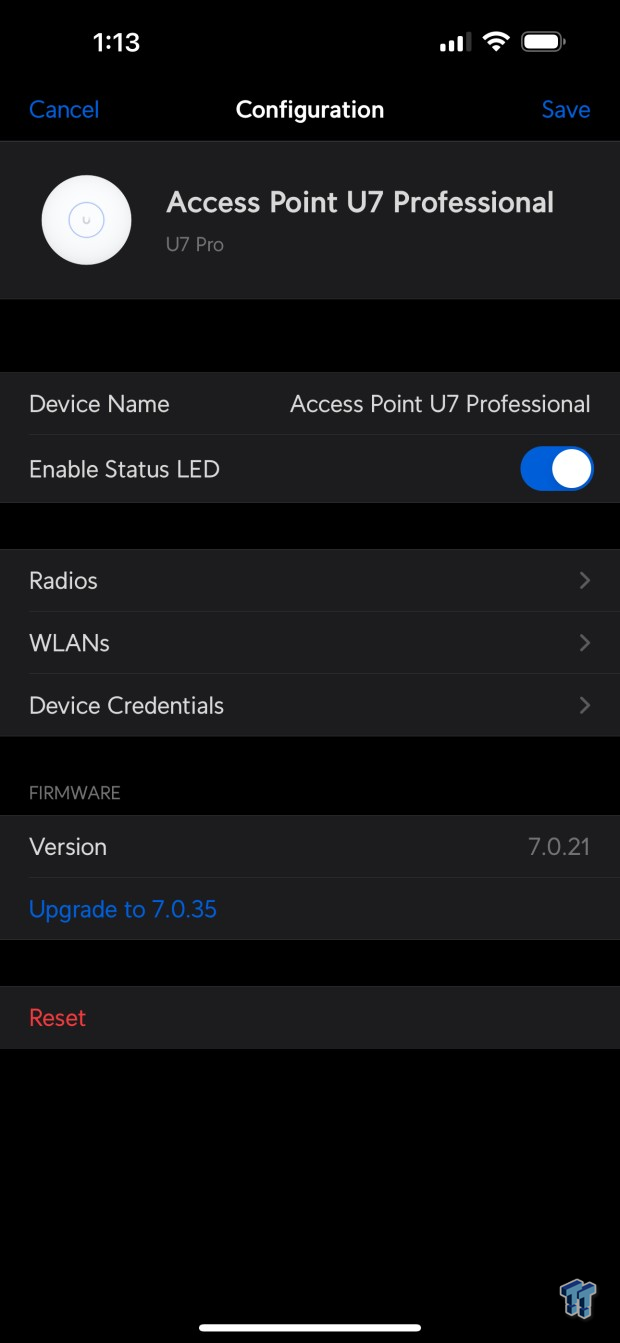
Hitting the configuration button at the top right, we land on the available options for the U7 Pro. At the bottom, we can upgrade firmware, and there are options for each radio and WLAN.
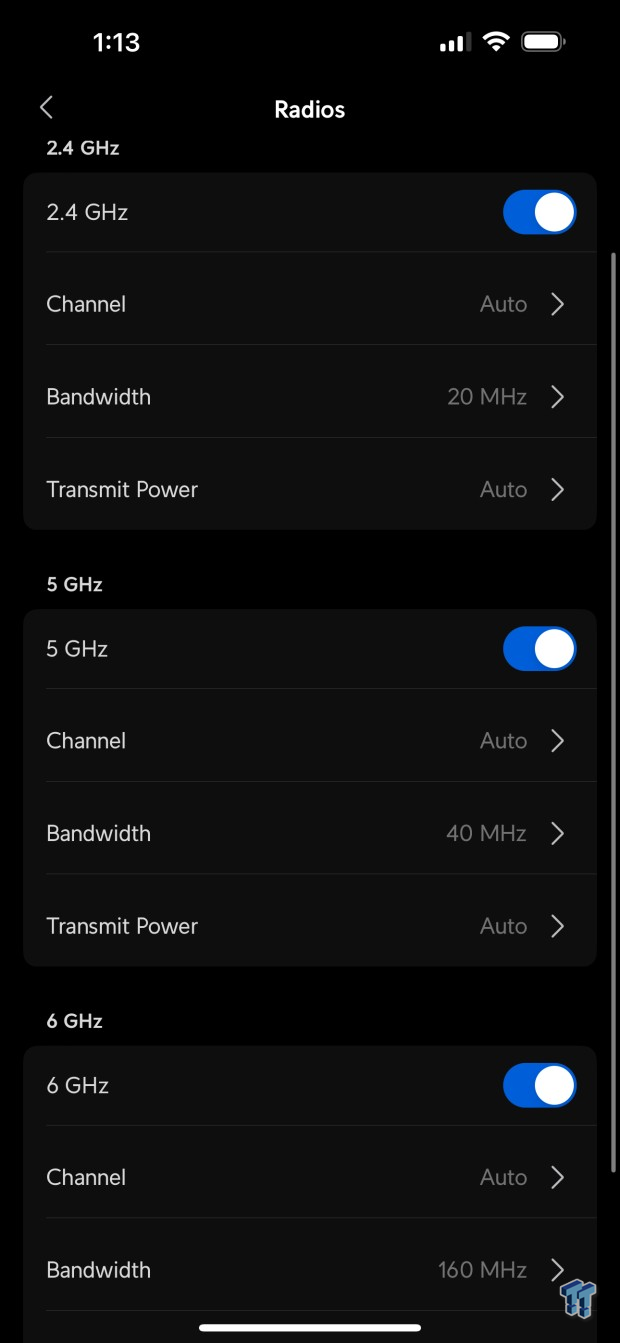
The Radios menu allows us to enable/disable each of the radios and change bandwidth, security, and channels.
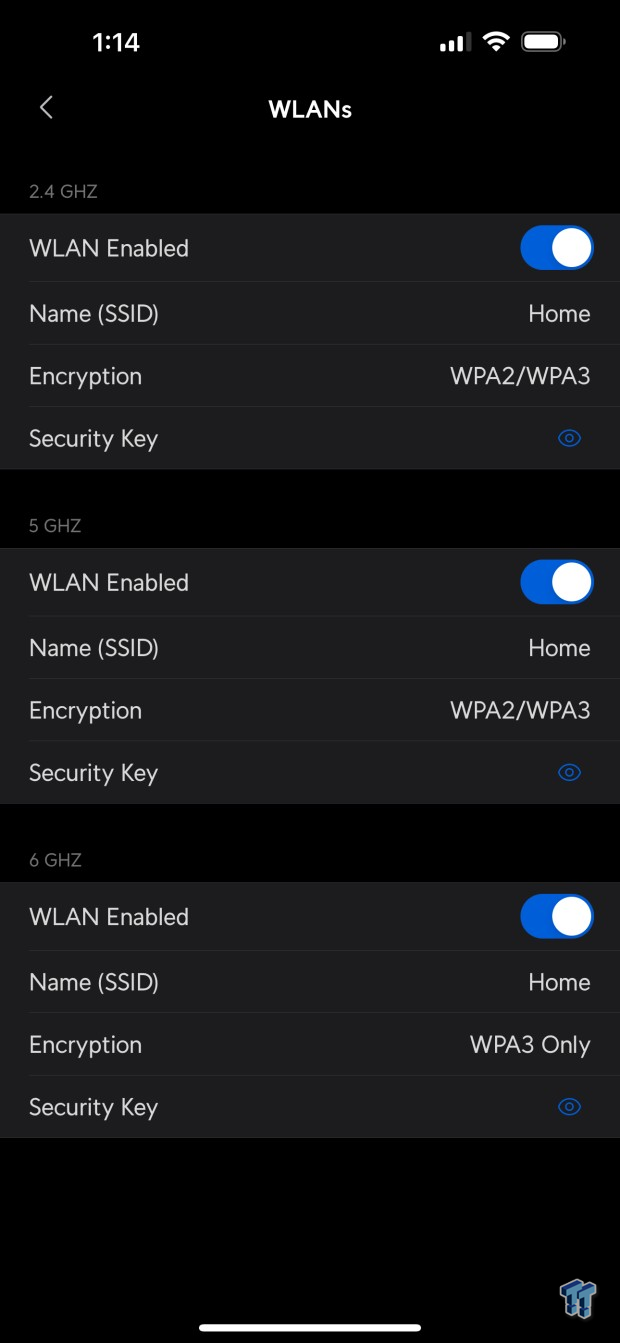
The WLAN menu allows you to change the SSID of each radio and password.
1st Test System Wi-Fi
- System: Alienware M16 R2
- Wi-Fi: Intel Wireless Wi-Fi 7 BE200
- OS: Microsoft Windows 11 Pro (buy from Amazon)
2nd Test System LAN
- System: ASUS ROG Strix Scar 17
- LAN: Marvell AQC113 10Gbe Thunderbolt Adapter
- OS: Microsoft Windows 11 Pro (buy from Amazon)
Wi-Fi Testing and Final Thoughts
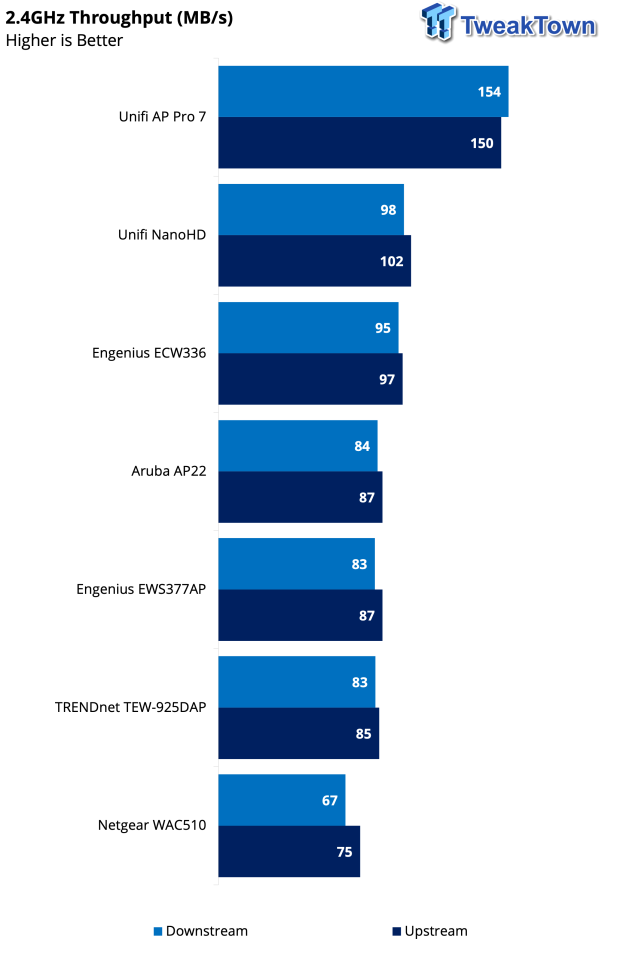
Testing 2.4GHz, the UniFi U7 Pro picked up 154Mbps down and 150Mbps upstream.
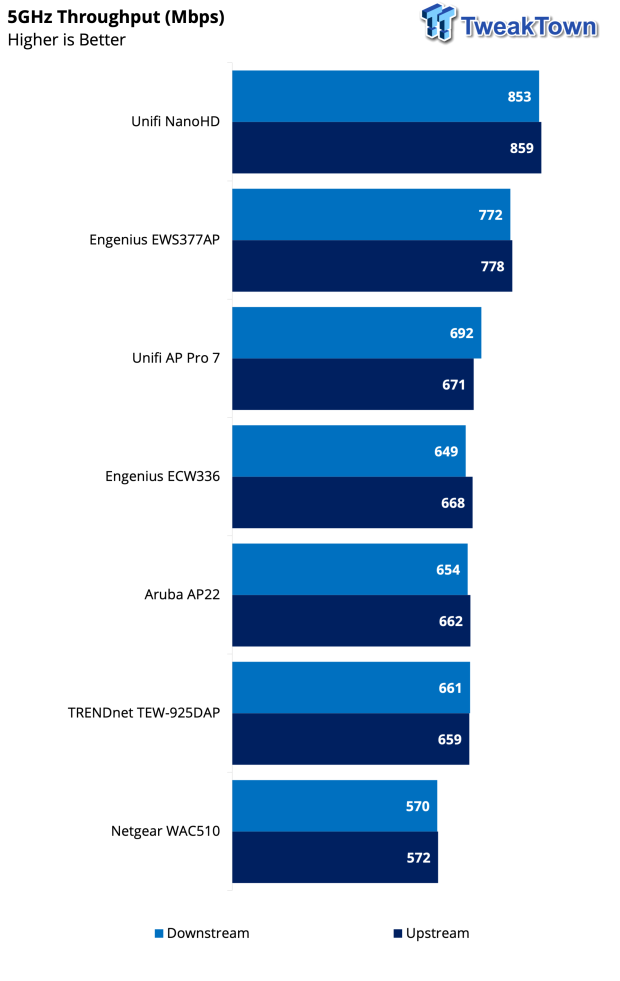
5GHz landed us with 692Mbps down and 671Mbps upstream, third in our charts.
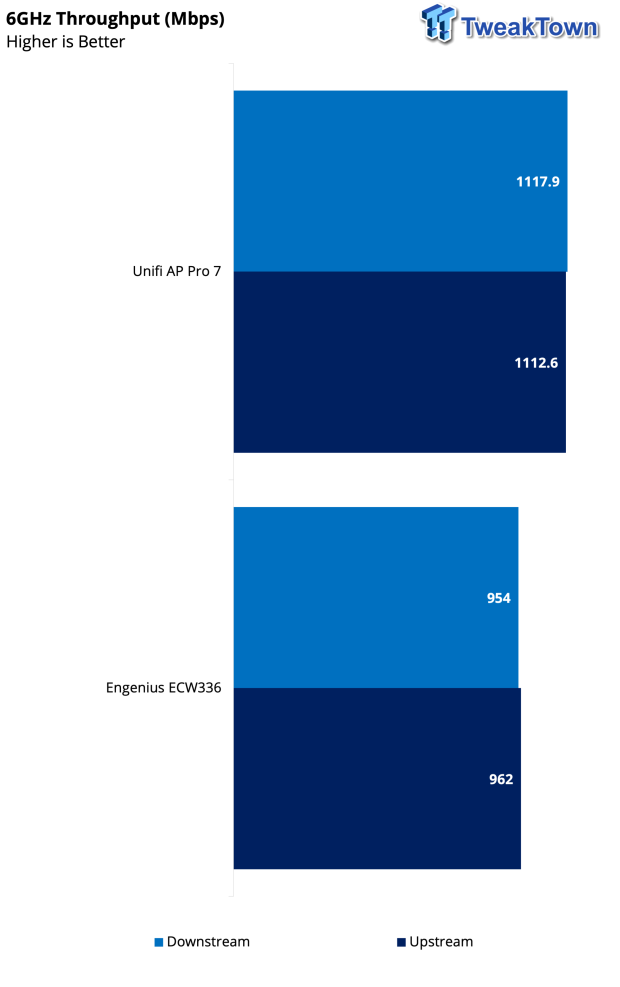
6GHz throughput reached nearly ~1200Mbps up and downstream, the quickest we have had since updating our test systems.
The U7 Pro is meant to be managed by UniFi Cloud, as we ran into several issues when using and testing it as a stand-alone AP. The first was the app is very limiting in the amount of configuring you can do; for instance, we can't even enable 320MHz support for the 6GHz radio within the app, and we also cannot add additional SSIDs if we wanted to. We had to set up and adopt the U7 Pro from the UniFi Network Center application on our MacBook Pro. This requires you to have a UniFi Cloud account. That said, it is painless and doesn't cost you anything, but it gives you a world of additional options for the U7 Pro.
After navigating through the initial setup and getting the U7 Pro setup for testing, we ran this AP for two weeks as our only home AP. In that time, we had a rather successful outing with the U7 Pro, with no Wi-Fi dropouts, crashes, or reboots apart from firmware updates. That said, this unit does run extremely hot, so much so that I did tune the radio power settings down to just broadcast to the edges of my property, but alas, I am unsure it helped.
Testing on the U7 Pro went off quite well; we picked up ~150Mbps on the 2.4GHz radio, which is higher than we have seen on our new test setup. 5GHz ramped up quite a bit from 2.4GHz, reaching nearly 700Mbps. 6GHz did the best, with numbers around 1200Mbps. That said, we look forward to testing MLO when it is available, as it has the potential to reach the limits of the 2.5Gbe uplink with our Alienware M16 R2.
As mentioned in the intro, we haven't seen any Wi-Fi 7 routers or APs reach under the $200 US mark until we skipped across the U7 Pro. At $189, it has the potential to be the single best upgrade path to 802.11BE if you are already running UniFi Cloud or have the patience to setup UniFi Network Server. As a stand-alone AP, the U7 Pro is no better than any current Wi-Fi 6E router, as the app is the limiting factor.

